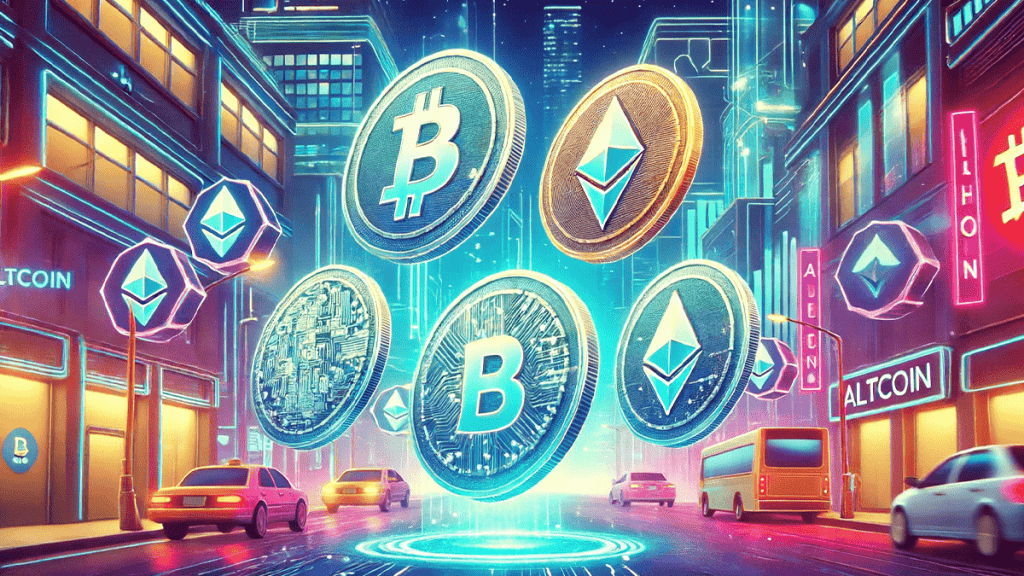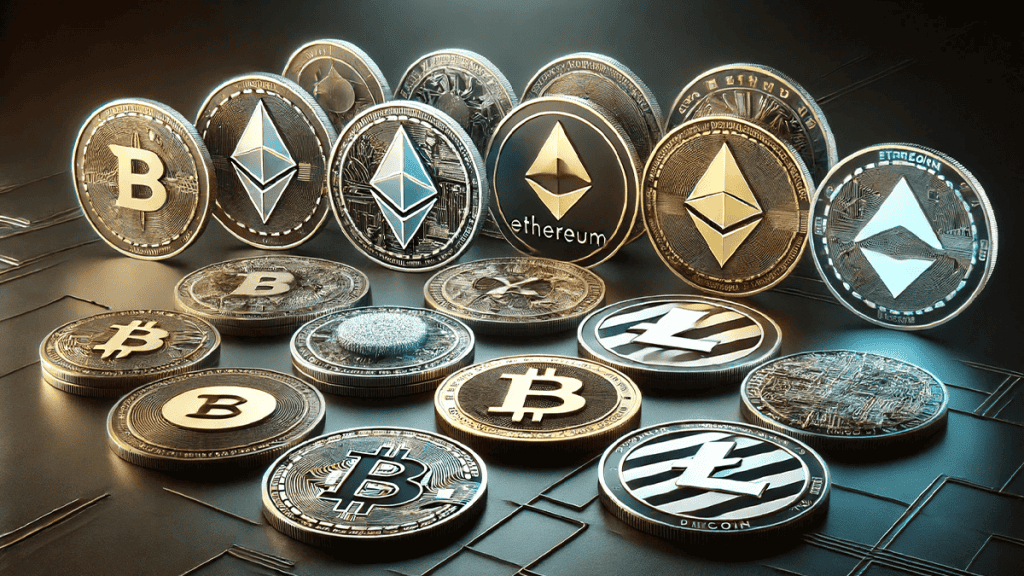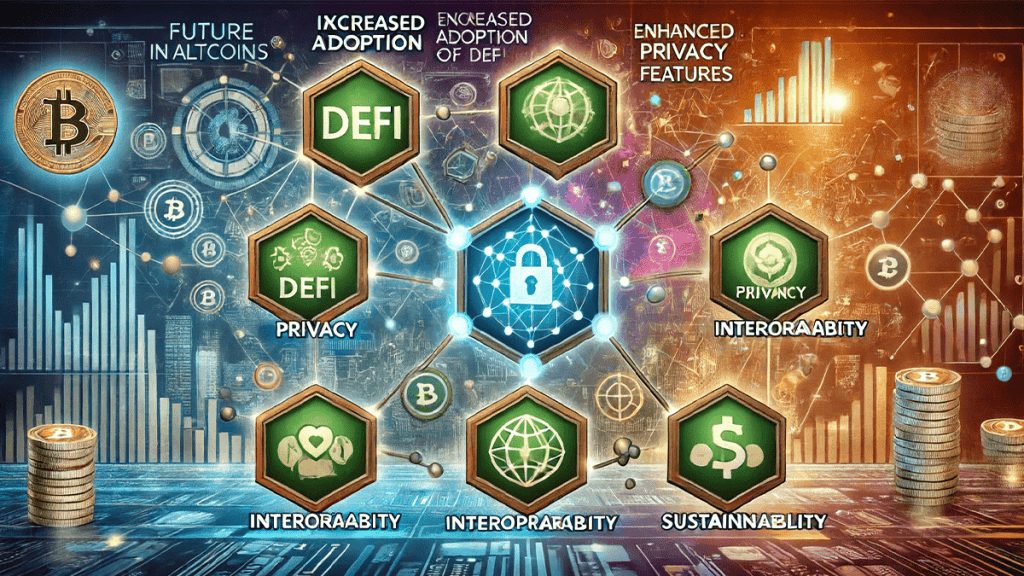
In the ever-evolving world of cryptocurrencies, Bitcoin has long held the throne as the most recognized and valuable digital asset. However, the rise of altcoins, or alternative coins, has significantly diversified the crypto market. These offer various functionalities and innovations that Bitcoin lacks, providing investors and users with a broad spectrum of opportunities and risks. This blog post aims to provide a detailed review of altcoins, focusing on their background, strengths and weaknesses, and their overall impact on the cryptocurrency landscape.
Altcoins represent a significant portion of the cryptocurrency market, each with its unique characteristics and intended use cases. From Ethereum’s smart contract capabilities to Ripple’s efficient cross-border payment solutions, have introduced new paradigms in digital finance. As of June 2024, understanding the intricacies of these alternative coins is crucial for anyone involved in or considering entering the crypto space.
This comprehensive review will delve into the historical context, comparing their various strengths and weaknesses, and discuss their importance in today’s financial ecosystem. By the end of this post, you will have a clearer understanding of what altcoins are, how they differ from Bitcoin, and why they matter in the grand scheme of digital currencies.
Altcoins Background
The term “altcoin” refers to any cryptocurrency other than Bitcoin. The inception of altcoins dates back to 2011 with the launch of Namecoin, which aimed to decentralize domain registration. Since then, the number has exploded, with thousands of new coins and tokens created, each designed to address specific issues or provide unique features not available in Bitcoin.
Altcoins can be categorized into various types based on their functionalities. Some of the most notable categories include stablecoins, which aim to provide price stability; utility tokens, which provide access to a specific service within a blockchain ecosystem; and governance tokens, which allow holders to participate in the decision-making processes of a project.
Ethereum, introduced in 2015 by Vitalik Buterin, is perhaps the most well-known altcoin. It brought the concept of smart contracts to the forefront, allowing developers to build decentralized applications (dApps) on its blockchain. This innovation spurred the creation of numerous other platforms and tokens, each vying to improve upon or differentiate themselves from Ethereum and Bitcoin.
For a deeper understanding of this topic, check out the video below
Strengths and Weaknesses
Altcoins offer a variety of strengths that make them attractive to different types of users and investors. Here are some of the primary advantages:
- Innovation and Utility: Many altcoins introduce new features and capabilities that Bitcoin does not offer. For example, Ethereum’s smart contracts enable automated, self-executing agreements, which are essential for decentralized finance (DeFi) applications.
- Transaction Speed and Cost: Several altcoins are designed to process transactions faster and at a lower cost than Bitcoin. Ripple (XRP) and Litecoin (LTC) are examples of altcoins that provide quicker transaction times and lower fees.
- Diverse Use Cases: Altcoins serve various purposes beyond just a store of value. Stablecoins like Tether (USDT) offer price stability, while privacy coins like Monero (XMR) focus on enhanced privacy and anonymity.
Despite these strengths, altcoins also have their weaknesses:
- Market Volatility: Altcoins can be highly volatile, often experiencing significant price fluctuations. This volatility can deter investors seeking stable returns.
- Regulatory Risks: Many altcoins face regulatory scrutiny, which can impact their adoption and value. Governments worldwide are still figuring out how to regulate cryptocurrencies, leading to an uncertain future for many altcoins.
- Security Concerns: Not all altcoins are created equal in terms of security. Some projects may have vulnerabilities or be more susceptible to hacking and fraud.
| Altcoin | Strengths | Weaknesses |
|---|---|---|
| Ethereum | Wide adoption, versatile dApp platform | High gas fees, scalability issues |
| Ripple | Fast transactions, low fees | Centralization concerns, regulatory issues |
| Litecoin | Lower transaction fees, faster block times | Less adoption, limited innovation |
| Cardano | Energy-efficient, strong academic backing | Still in development, adoption hurdles |
Impact on the Cryptocurrency Market
Altcoins play a crucial role in the broader cryptocurrency ecosystem. They contribute to the market’s diversity, driving innovation and competition. The development has led to several significant impacts:
- Technological Advancements: Altcoins have spurred the creation of new blockchain technologies and solutions. For instance, the introduction of proof-of-stake (PoS) consensus mechanisms by altcoins like Cardano (ADA) and Tezos (XTZ) offers a more energy-efficient alternative to Bitcoin’s proof-of-work (PoW) system.
- Financial Inclusion: By providing a range of financial services that are accessible to anyone with an internet connection, contributing to greater financial inclusion. DeFi platforms, many of which are built on Ethereum, allow users to lend, borrow, and trade assets without traditional intermediaries.
- Economic Opportunities: Altcoins have created new economic opportunities, from investment prospects to job creation within the blockchain industry. Developers, analysts, and marketers, among others, have found new career paths in the burgeoning crypto sector.
Popular Altcoins in 2024

The landscape of altcoins is constantly evolving, with several standout performers in 2024:
Ethereum (ETH)
Known for its smart contract functionality and vast dApp ecosystem, Ethereum continues to be a cornerstone in the decentralized finance (DeFi) sector.
Ripple (XRP)
Ripple focuses on cross-border payment solutions with quick transaction times and low fees. Its technology is widely adopted by financial institutions, enhancing global money transfers.
Litecoin (LTC)
Litecoin aims to be a faster, more efficient alternative to Bitcoin, offering quicker block generation times and a different hashing algorithm.
Cardano (ADA)
Cardano utilizes a proof-of-stake consensus mechanism for energy efficiency and scalability. It is backed by rigorous academic research and peer-reviewed projects.
Future Trends in Altcoins

The future of altcoins looks promising, with several trends expected to shape the market:
| Trend | Description |
|---|---|
| Increased Adoption of DeFi | Decentralized finance continues to grow, with more altcoins integrating DeFi functionalities. |
| Enhanced Privacy Features | Privacy-focused altcoins like Monero and Zcash may see increased usage as users seek more anonymity. |
| Interoperability | Projects like Polkadot (DOT) aim to create a more interconnected blockchain ecosystem, enabling seamless interaction between different blockchains. |
| Sustainability | Environmentally-friendly altcoins using proof-of-stake and other energy-efficient methods are likely to gain more traction. |
Conclusion
The world of altcoins is vast and varied, offering numerous opportunities and challenges for investors, developers, and users alike. As we’ve explored, providing innovative solutions and improvements over Bitcoin, yet they also come with their own set of risks and uncertainties.
Understanding the strengths and weaknesses is essential for making informed decisions in the cryptocurrency space. While some altcoins offer faster transactions and new functionalities, others may face significant volatility and regulatory challenges. The impact of altcoins on the broader financial ecosystem is profound, driving technological advancements and promoting financial inclusion.
As the cryptocurrency market continues to evolve, altcoins will likely play an increasingly important role. Staying informed about these developments and critically assessing each altcoin’s unique attributes will be crucial for anyone looking to navigate this dynamic landscape.
Key Points
- Altcoins are any cryptocurrencies other than Bitcoin, often designed to address specific issues or provide unique features.
- They drive innovation in the crypto market, offering new technologies and financial services.
- They include stablecoins, utility tokens, and governance tokens, among others.
- They can be highly volatile and face regulatory and security challenges.
- Research thoroughly, use reputable exchanges, and consider the altcoin’s use case and market potential.
References
- ClearTax. Altcoin.
- Investopedia. Altcoin.
- Nasdaq. A Complete Comprehensive Overview of Altcoins.
- The Motley Fool. Altcoin.
